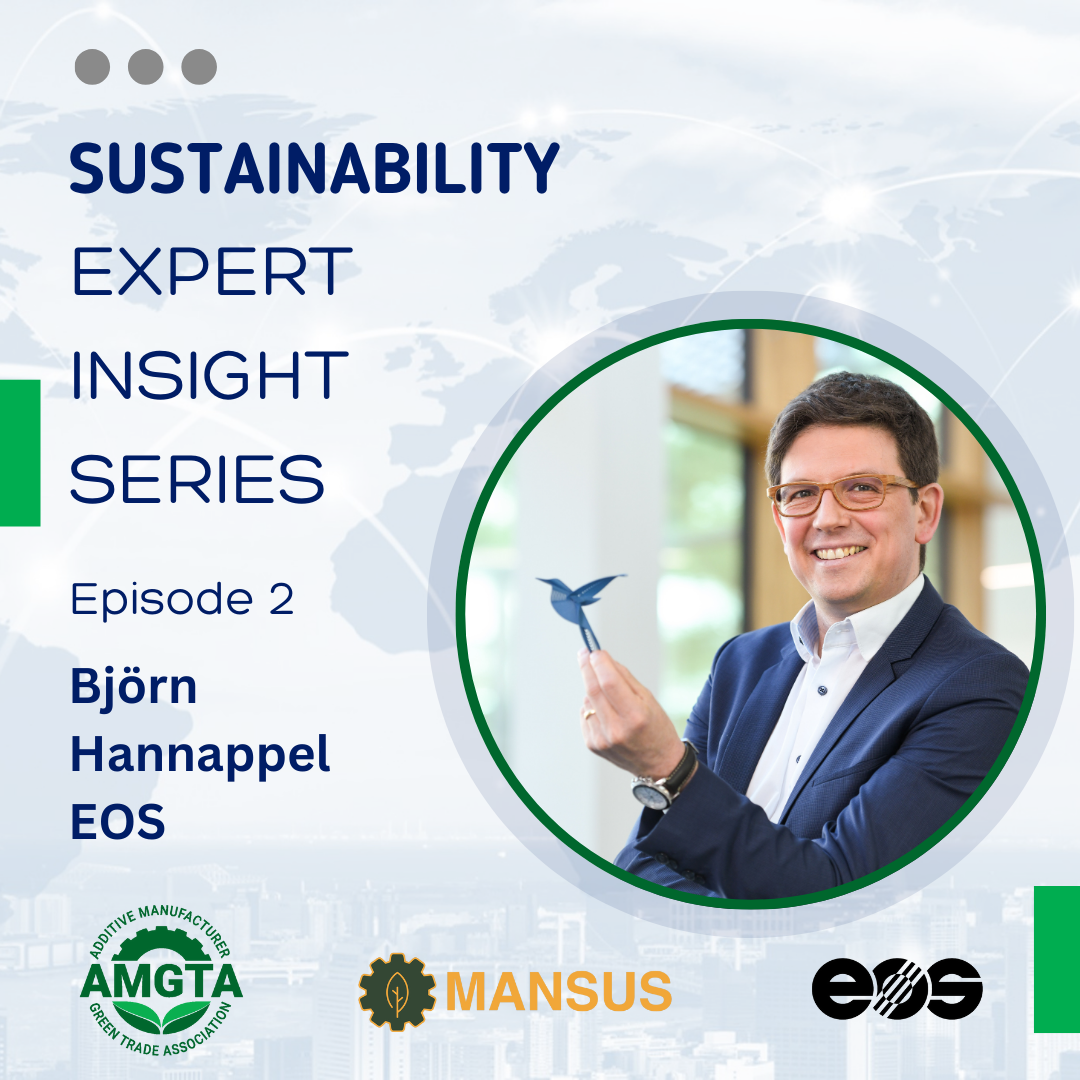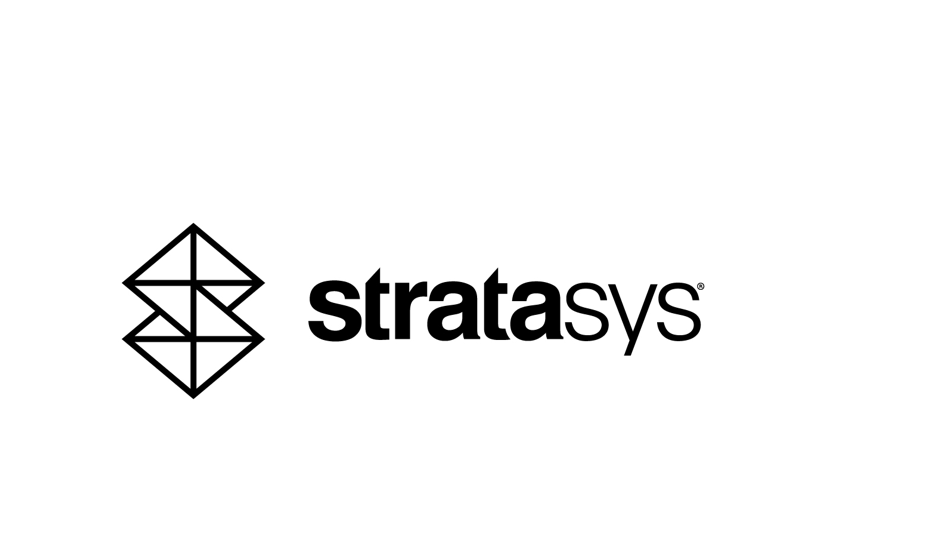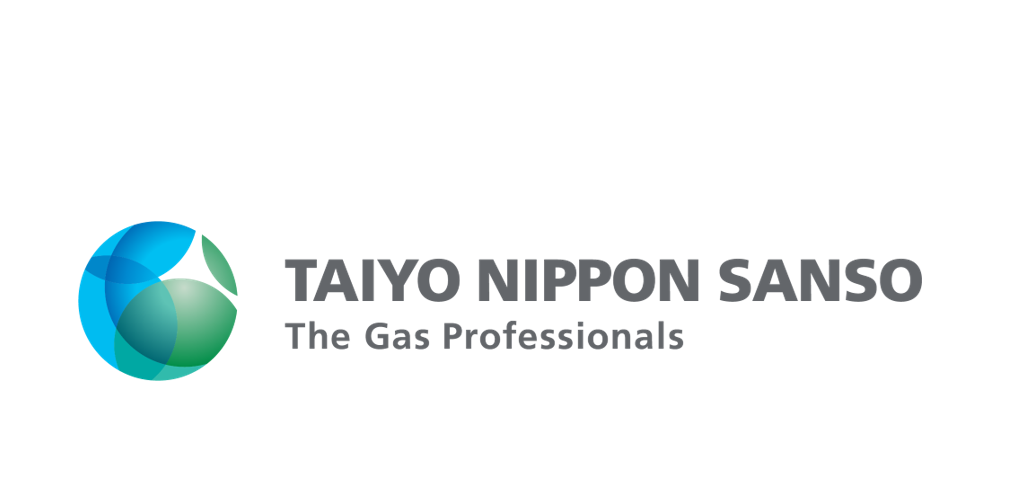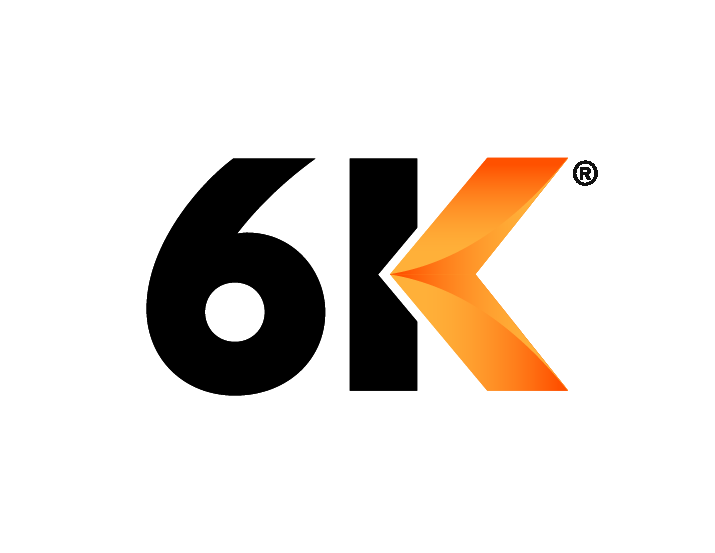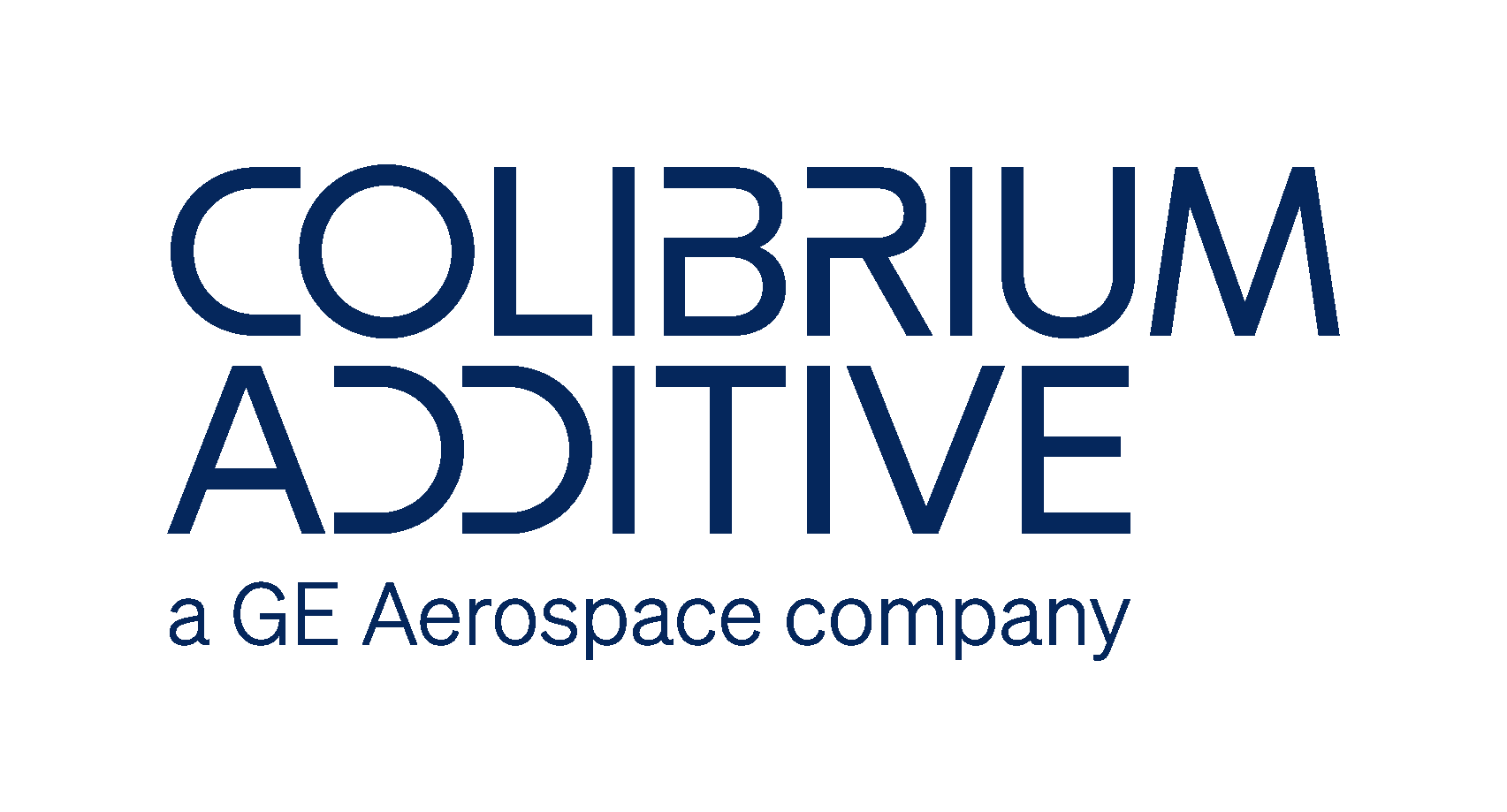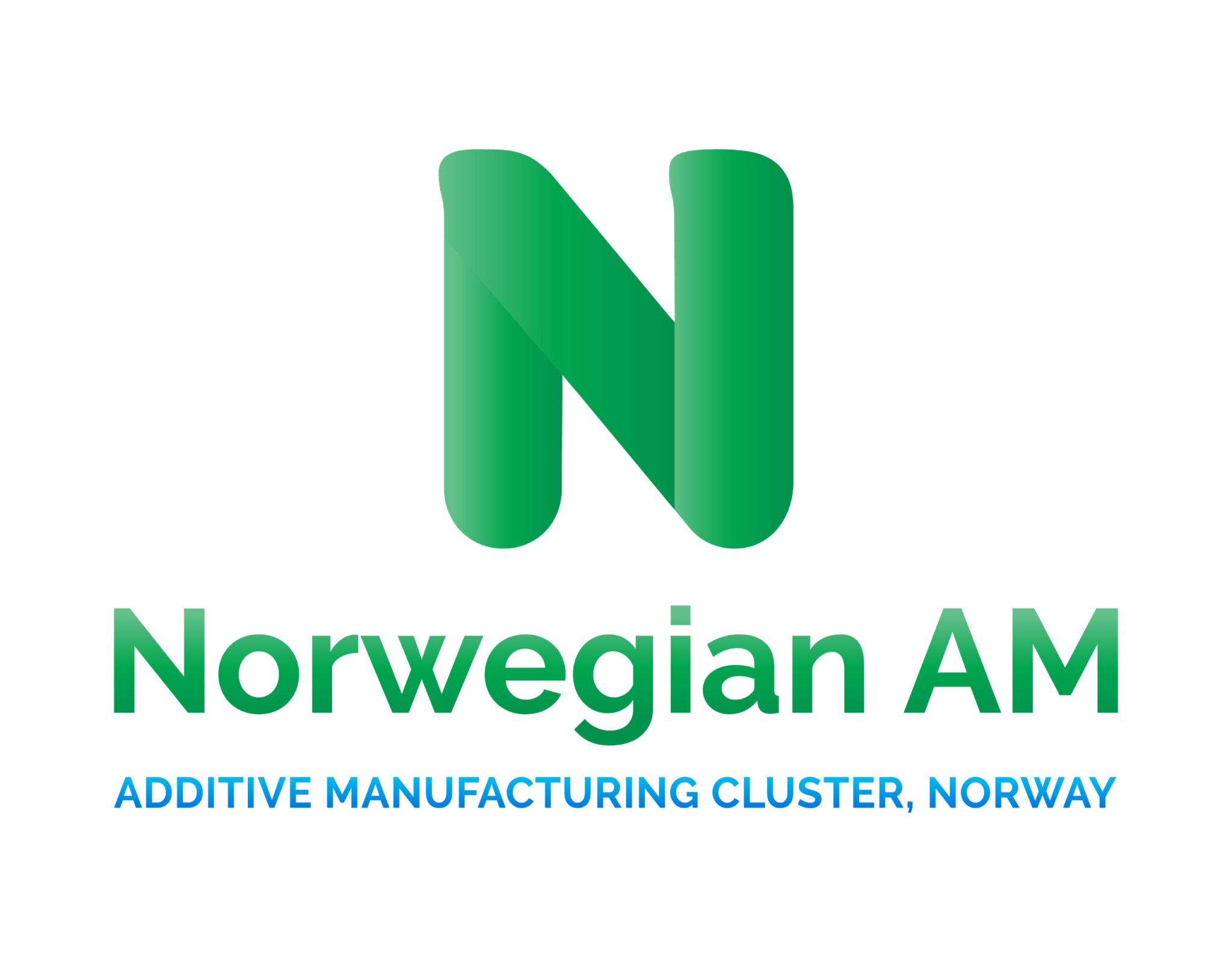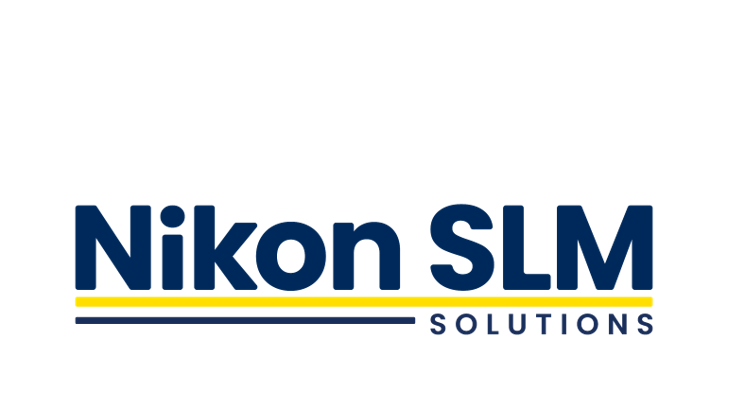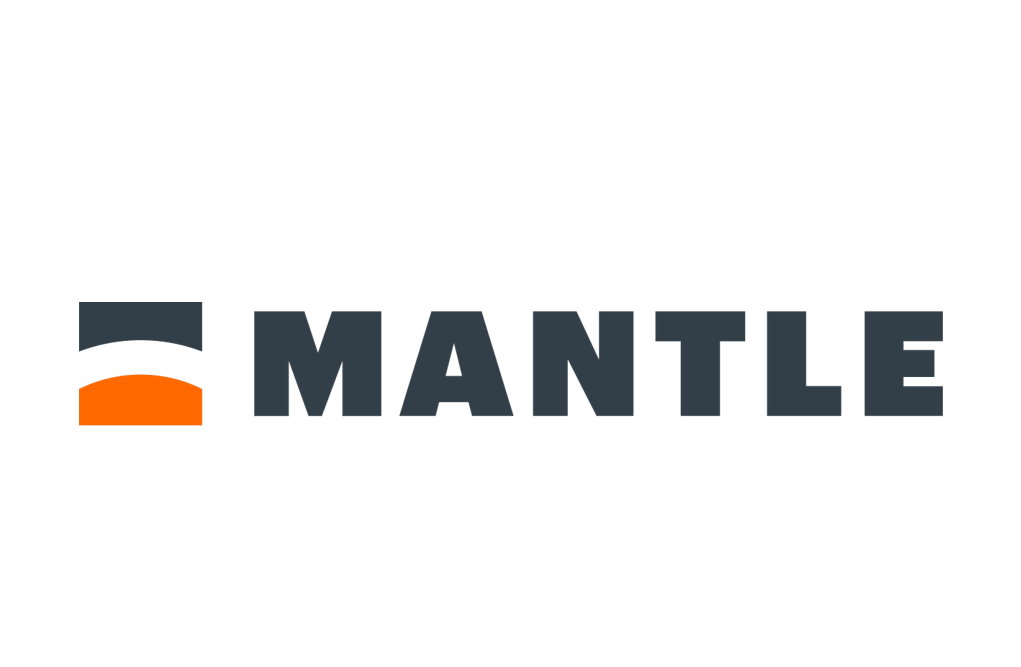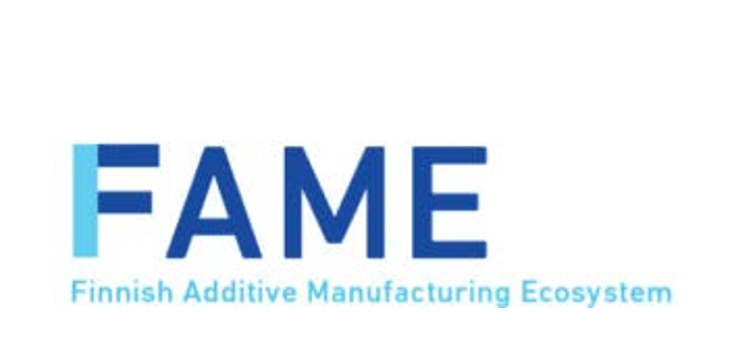January 15, 2025
Sustainability Expert Insights with Industry Expert Björn Hannappel, Head of Sustainability, EOS.

AMGTA and MANSUS are teaming up to present a nine-part interview series that highlights additive manufacturing’s potential and how AMGTA members are successfully achieving environmental and commercial sustainability. In our first episode, Sherri Monroe, Executive Director of AMGTA, introduced the series and shared her thoughts. She discussed the role of additive manufacturing in driving sustainability, economic resilience, and innovation in the manufacturing space.
In the second episode of the mini-series, we had the pleasure of speaking with Björn Hannappel, Head of Sustainability at EOS, a global leader in industrial 3D printing solutions for metals and plastics. Björn shared insights into how EOS is shaping the future of responsible manufacturing through innovative additive manufacturing technologies.
Pioneering Responsible Manufacturing
EOS was founded in 1989 near Munich, Germany, as a family-owned business with an initial focus on laser systems for manufacturing. As lasers are integral to a number of AM technologies, the company was soon designing and selling its own systems. Björn highlighted EOS’s comprehensive approach to additive manufacturing, offering 3D printers, materials, and process parameters that enable customers to produce with precision and sustainability in mind.
Björn took us through the three-pronged approach to sustainability within EOS:
- Responsible Design: Getting the maximum benefit from AM starts at the design stage. Some of the unique capabilities of layered construction can’t be easily retrofitted to existing designs, including lightweighting techniques. Björn cited a collaboration with Siemens, where a formerly heavy, cast-metal gripper was redesigned to make the most of 3D printing to significantly reduce its weight and lifetime carbon emissions. The lighter design allowed for smaller robots in production, increasing efficiency and cutting costs. Another example involved consolidating a rocket engine’s 200-300 parts into a single component, saving weight, improving efficiency, and reducing costs.
- Responsible and Digital Value Chains: On-demand and decentralized production are both key areas to consider when looking to extract sustainability gains from AM. Björn highlighted a collaboration with YOU MAWO which demonstrated that custom 3D-printed eyewear performed significantly better than the conventional eyewear in categories, such as climate change, human toxicity, ozone depletion, and water depletion. Similarly, decentralized production of spare parts saves energy, storage, and transportation costs while improving sustainability.
- Responsible Materials: Recognizing that materials significantly impact carbon footprints, EOS has developed new materials with reduced environmental impact—45% lower carbon footprint for polymer materials and 25% for metal materials. These advancements help customers meet their climate targets.
Collaboration and Innovation
Björn emphasized the importance of collaboration within EOS and with external partners. Internally, a dedicated sustainability team works alongside colleagues globally to drive sustainable initiatives. Externally, EOS engages with suppliers and customers to foster transparency and co-develop solutions.
Björn also noted the value of organizations like AMGTA in raising awareness, fostering collaboration, and driving industry-wide progress. “Sustainability is too big of a topic for one company to tackle alone,” he remarked, underlining the need for collective efforts, even among competitors.
Looking ahead, Björn sees immense potential for AM to contribute to a more sustainable world. From resource efficiency to enabling circular economy models, the technology can drive innovation across industries. He believes the full potential of additive manufacturing is yet to be realized, particularly in the use phase of 3D-printed components, where energy savings and carbon reductions can be maximized.
Björn’s optimism is rooted in the belief that innovation and technology can create a better world for everyone. EOS’s commitment to sustainability is not just about today’s solutions but about shaping the future of responsible manufacturing.
Advancing Sustainability
Our conversation with Björn looks at the transformative role that AM can and is playing in advancing sustainability. EOS’s dedication to responsible design, value chains, and materials underscores the importance of innovation in tackling global challenges. We filmed these interviews at Formnext 2024, where our members gathered to share their technology and take part in the conversation. You can watch the full interview with Björn and follow this series on our News & Insights page, and via the MANSUS YouTube channel, we will be sharing a new episode every Wednesday until 5th March. Thank you to our valued members for taking part in this series.

